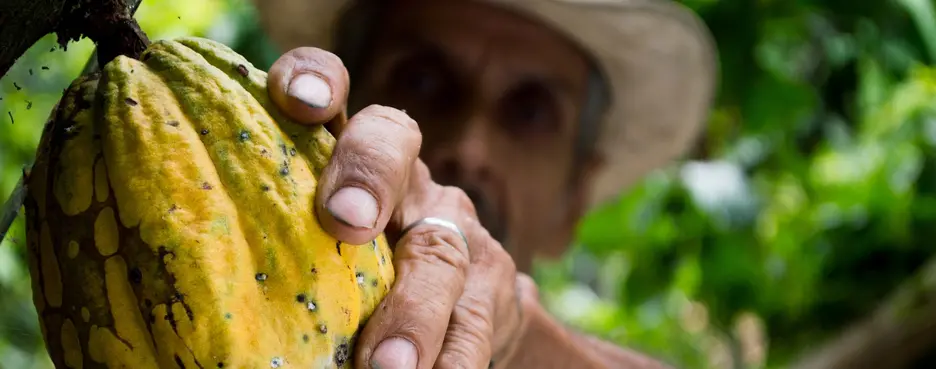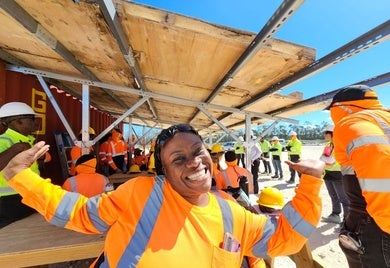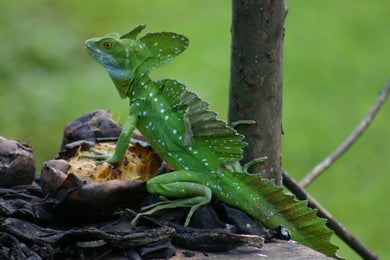Why is there growing demand for Central American cocoa?

Cocoa beans have long been abandoned as a viable currency, but the crop is gaining popularity again in Central America thanks to a recent uptick in demand for high-quality chocolate. As global chocolate consumption continues to grow, consumers are developing a taste for more refined flavors. This is benefitting Central American producers, whose cocoa trees yield much higher quality beans than those in other parts of the world.
In addition to quality, consumers are also seeking more sustainable chocolate, driving industry compliance with the standards put forward by Fairtrade, Rainforest Alliance and others. In 2012, 22% of the global cocoa production was certified and the sector was growing at a rate of 69% annually, totaling 900,000 metric tons per year.
[caption id="attachment_5551" align="alignleft" width="425"] The Aztecs used cocoa beans to pay for everyday goods[/caption]
The Aztecs used cocoa beans to pay for everyday goods[/caption]
As chocolatiers in Europe and beyond are adding high-quality sustainable chocolate to their product range, cocoa producers in Central America are set to reap the benefits. With a rich cocoa-growing tradition, countries like Belize, Guatemala and Panama have an enormous opportunity to further diversify their export profile and increase productivity.
Just how big this potential is, is something Alejandro and Álvaro Pérez are exploring right now. When the two brothers first came to Panama’s northern Boca del Toro province, they were struck by the quality of the local cocoa beans and how growing techniques had been largely unaltered for centuries.
[caption id="attachment_5553" align="alignright" width="300"] Central American cocoa is a business oportunity[/caption]
Central American cocoa is a business oportunity[/caption]
[caption id="attachment_5553" align="alignnone" width="224"] El cacao es una oportunidad de negocio y desarrollo para los agricultores centroamericanos[/caption]
El cacao es una oportunidad de negocio y desarrollo para los agricultores centroamericanos[/caption]
Through their company, Innovación y Desarrollo Local (IDEL), the brothers are now looking for investors to build a centralized cocoa processing plant. IDEL is partnering with the local producers association to source its cocoa exclusively from smallholder farmers in the area, who will continue to use traditional agroforestry systems to grow their crop.
“We see cocoa as a triple-bottom line opportunity,” notes Alejandro Pérez. For IDEL, the rich aroma of the local cocoa beans is a business opportunity with high growth potential. Perhaps even more significantly, the project brings local indigenous producers into its value chain, improving their livelihoods while also promoting biodiversity through traditional farming techniques.
The business model the brothers are working on in Panama has already been shown to work elsewhere. Uncommon Cacao set out to commercialize high-quality Belizean cocoa in 2010 through its local subsidiary Maya Mountain Cacao. The company is sourcing its cocoa from smallholder farmers for the ultra-premium chocolate industry, improving the lives of local farmers and preventing deforestation. Given the high demand it experienced, Uncommon Cacao expanded further and opened another business in Guatemala in 2013.
Alejandro and Álvaro Pérez are hoping to follow in these footsteps once they are able to identify an investor. “As Panamanians, I think we are twice as determined,” says Alejandro Pérez. “We know how much our project would impact the local economy and change the lives of hundreds of families in Boca del Toro.” While cocoa likely won’t make a comeback as a currency, the ancient crop looks set to renew its significance as a source of income for Central American farmers.
LIKE WHAT YOU JUST READ?
Subscribe to our mailing list to stay informed on the latest IDB Invest news, blog posts, upcoming events, and to learn more about specific areas of interest.
Subscribe



